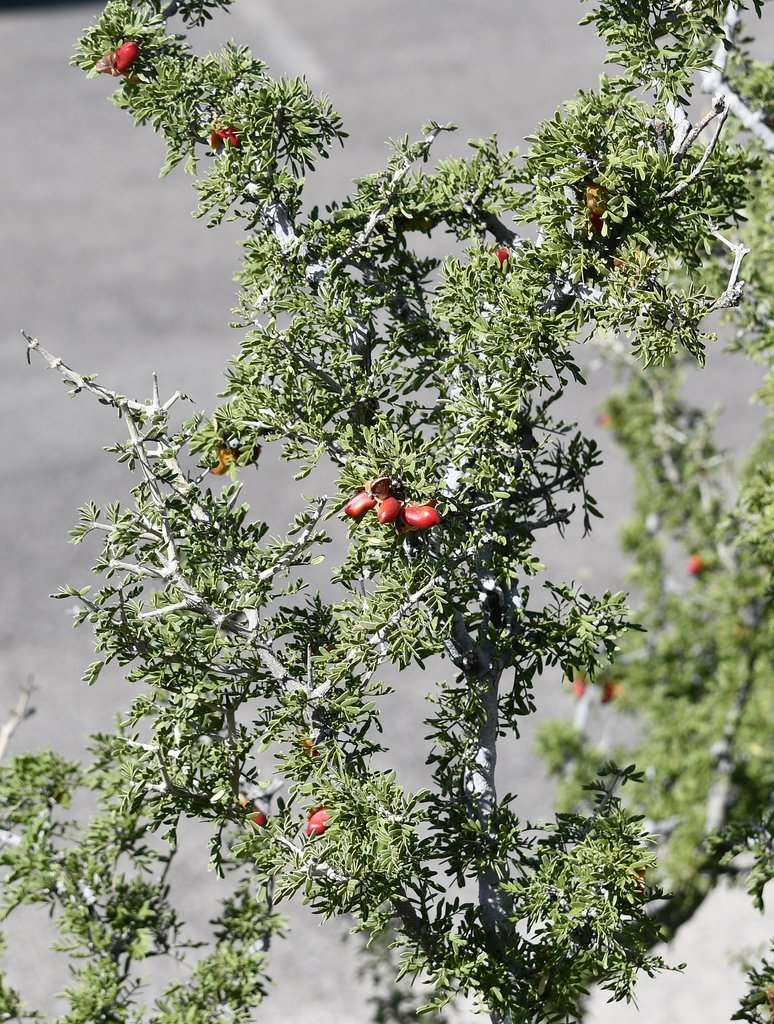Guaiacum angustifolium
Texas Guayacán
Family: Zygophyllaceae
Large, evergreen shrub related to the creosote bush growing usually about 6’ tall but can get to double that height in favorable conditions. Purple flowers in spring through fall. The fruit is golden-orange, splitting open to reveal seeds covered with vivid red pulp.
Full sun, low to moderate water with good drainage, hardy to about 15°F.
Nectar rich flowers for pollinators, especially native bees that specialize on creosote bush and other Zygophyllaceae, and larval food plant for the gray hairstreak (Strymon melinus) and the lyside sulfur (Kricogonia lyside).
Like other species in its genus, the wood of G. angustifolium has extreme hardness and density and will sink in water. The sapwood is creamy yellow, while the heartwood is dark purple-brown. The wood is used for fence posts, tool handles, and firewood. Root extracts are used to treat rheumatism and sexually transmitted diseases. Soap can be made from the root bark, as it contains saponin; historically soap made in this way would be used to wash wool, since it does not fade the dyed-colors. The bark of the roots is also used as a disinfectant. The flowers are valued by beekeepers for their consistent nectar production.
Photo by Thomas Athens, iNaturalist
There are 6 species of GuaiacumThe genus name originated from the Taíno word guayacán; it was adopted into English in 1533. The species name, angustifolium, comes from the Latin words angustus meaning narrow and folium meaning leaf, referring to the more narrow nature of the foliage of this species.
This species is native to southern and western Texas in the United States and northern Mexico (Chihuahua, Coahuila and Nuevo Leon) in chaparral & brush country, prairie, plains, meadows, pastures, and savannas.




